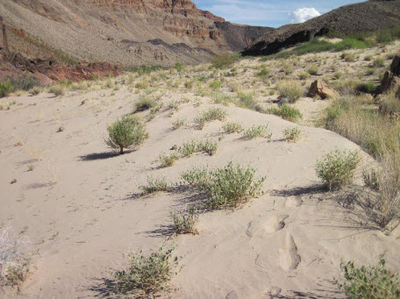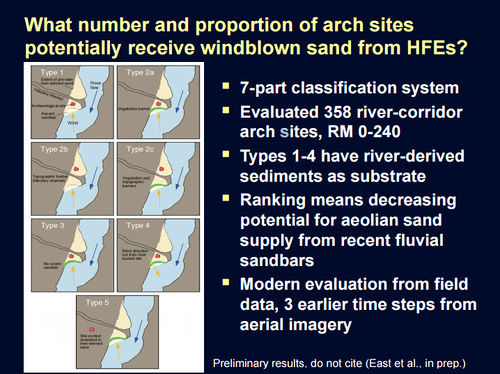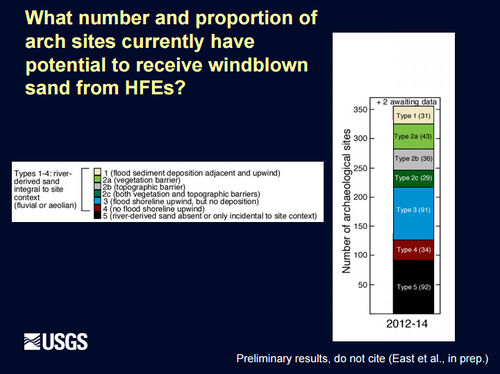Difference between revisions of "Aeolian Sand Transport"
Cellsworth (Talk | contribs) |
Cellsworth (Talk | contribs) |
||
| Line 98: | Line 98: | ||
---- | ---- | ||
| − | [https://pubs.er.usgs.gov/publication/pp1825 '''East et | + | [https://pubs.er.usgs.gov/publication/pp1825 '''East et al. 2016:''' ] |
*'''The problem:''' Landscapes downstream from Glen Canyon Dam contain archaeological resources that are affected by fluvial (river), aeolian (wind), and hillslope (gravity and rainfall-runoff) geomorphic processes. | *'''The problem:''' Landscapes downstream from Glen Canyon Dam contain archaeological resources that are affected by fluvial (river), aeolian (wind), and hillslope (gravity and rainfall-runoff) geomorphic processes. | ||
*'''The question:''' Can Colorado River sediment enhance the preservation of river corridor archaeological resources in these landscapes through aeolian sand deposition and mitigation of gully erosion? | *'''The question:''' Can Colorado River sediment enhance the preservation of river corridor archaeological resources in these landscapes through aeolian sand deposition and mitigation of gully erosion? | ||
Revision as of 11:46, 31 March 2017
|
|
Aeolian Sand TransportSand can potentially help preserve archaeological features by direct burial and/or by mitigating gullying and other erosion. Sand can be deposited on archaeological features or within gullies via fluvial (river) or aeolian (wind) deposition. Most archaeological sites are above the highest contemporary river stage, so aeolian deposition is the most likely mechanism for preservation and/or erosion mitigation. River-sourced sand deposition is a time-dependent process, and the outer limit of that process may extend for many years after any individual HFE. Additionally, HFEs with targeted vegetation removal could produce a net sediment surplus at some sites. [1] |
| --- |
--- |
--- |
|---|
|
|


